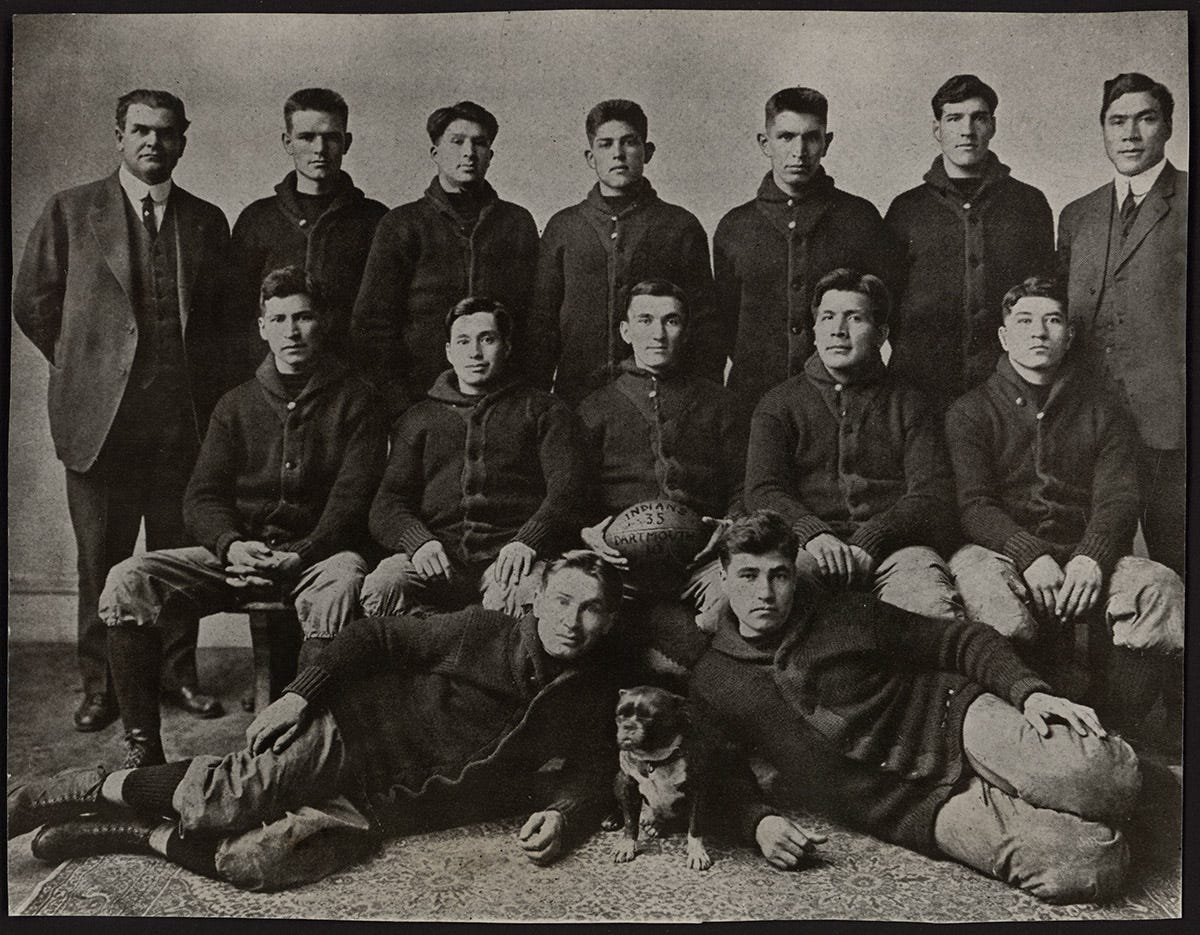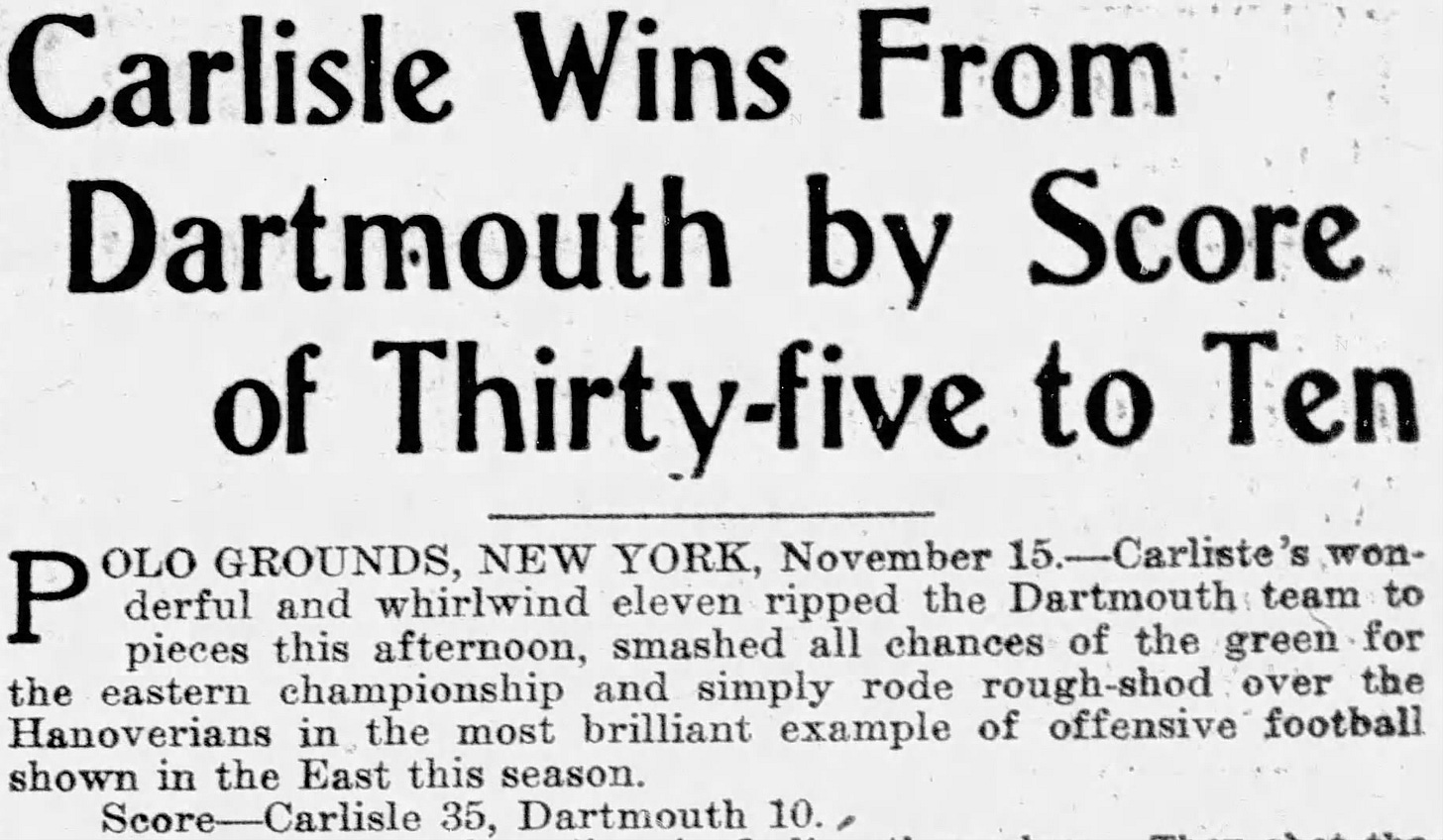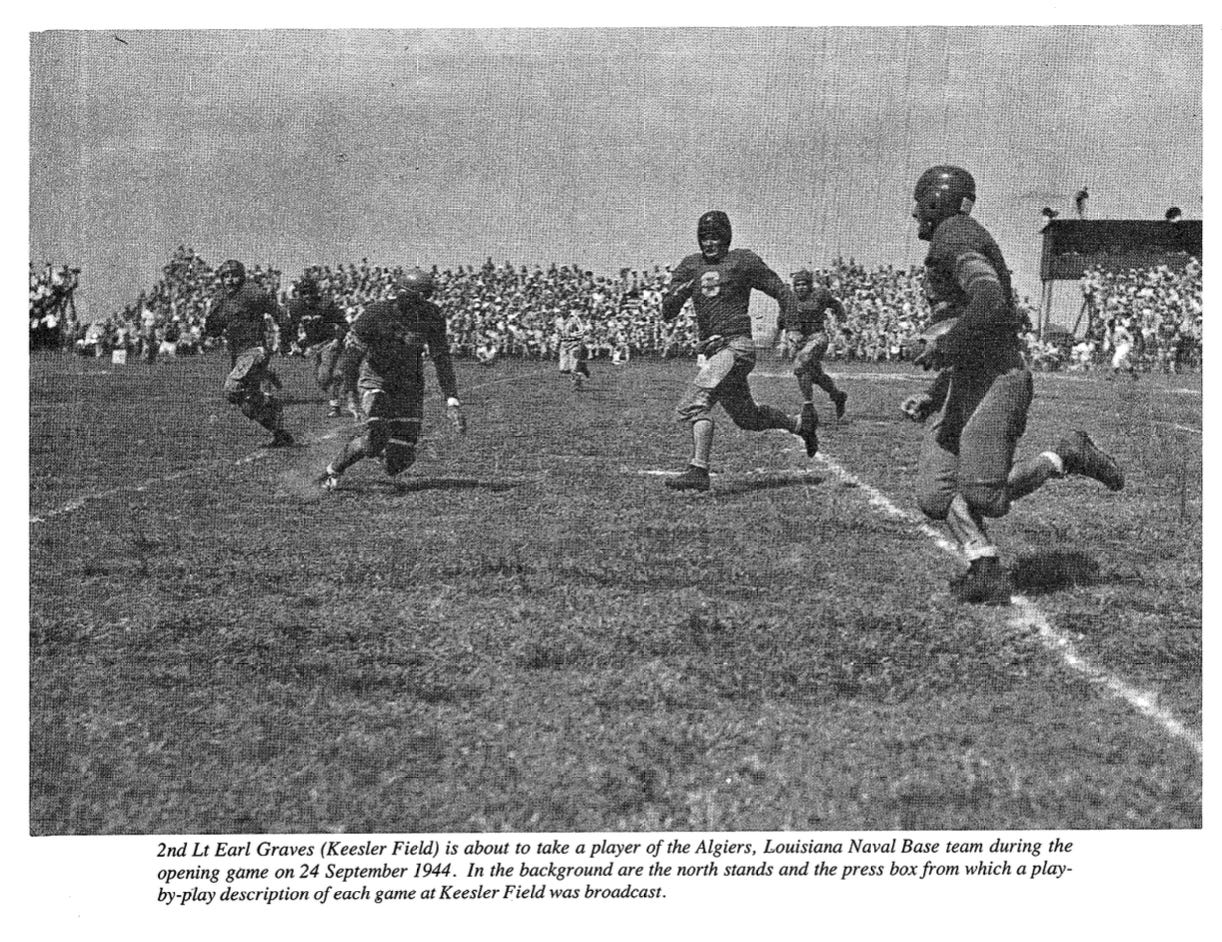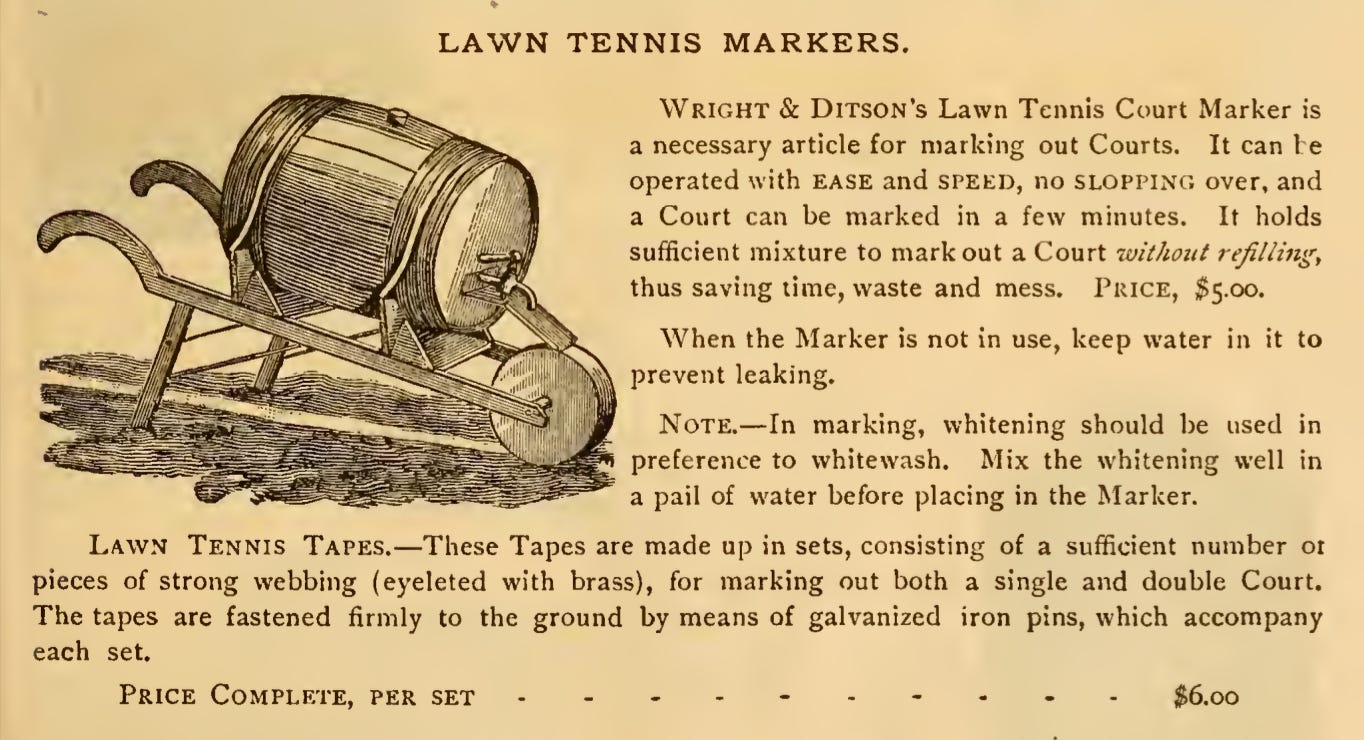Today's Tidbit... Factoid Feast VII
As discussed in Factoid Feast I, II, III, IV, V, and VI, my searches through football history sometimes lead to topics too important to ignore but too minor to Tidbit. Such nuggets are factoids, three of which are shared today.
When Football Went Online
Newspaper reports tell us that white lines marked the field borders for the 1880 Harvard-Princeton game, unlike other early football games that sometimes used flags in the four corners and at midfield rather than chalk. Chalked lines became more important with the arrival of downs in 1882 when the rules called for lines every five yards.
So, how did the old boys mark the lines? In all likelihood, they borrowed a wooden-barrelled line marker like those used for baseball, polo, or tennis, which also required white lines delineating one part of a grass field from another. An example tool of the trade can be seen below.
Warner Leapfrogs The Competition
With the arrival of fall training camps, tomorrow's Tidbit will cover "football conditioning" as described in a 1923 Wilson Athletic Library publication of the same name. While you eagerly await that story, today we can share a tale from 1913 when Pop Warner's Carlisle team prepared for their match with Dartmouth at the Polo Grounds. The press viewed Carlisle's 7-1-1 record as a disadvantage in their upcoming fight with 7-0 Dartmouth, who most saw as the top team in the East.

Rather than push his team through another strenuous conditioning period to close practice the Wednesday before the game, Warner had his boys play leapfrog for 15 minutes, which they thoroughly enjoyed. Of course, the proof is in the pudding, and the men of Carlisle swamped the Hanoverians 35-10, jumping over Dartmouth as the best team in the East.

Something’s Missing
The final factoid is as much about an image as the story itself and concerns a WWII-era postcard from Keesler Field, now Keesler Air Force Base. Keesler Field opened in the summer of 1941 after the city fathers petitioned the Army to build a base there in the run-up to WWII. Like most sizable bases, Keesler formed a football team, the Keesler Flyers, that competed with a few colleges and other military bases.
None of that is unusual, but the Keesler Field football postcard below caught my eye since I didn't recall seeing a postcard showing a diagrammed football play.
Notice anything unusual about the diagrammed Single Wing play? First, the defense only has seven players. While one can assume a few defensive backs would be positioned beyond the border of the postcard, few teams ran 5-2-4 defenses back then, and the strength of the defense seems to be shifted to the offensive weak side. More important, the right offensive tackle and end do not have blocking assignments on the play, which suggests the graphic artist who designed the postcard was very busy or did not know much about football.
While the postcard does not identify which year the base printed it, I'm confident the image is from a 1944 game when Keesler went 8-1-2 and that the ball carrier is 2nd Lt. Earl Graves. My confidence comes from a 1986 report on activities at the base during WWII, which includes the image below. The caption tells us that 2nd Lt. Earl Graves is preparing to tackle an opponent from Algiers Naval Base, but the double tape job holding his thigh pads in place and the body language tell me the ball carrier in the postcard is also 2nd Lt. Graves.

Graves directed physical fitness activities at Keesler and several other bases during the war, so while the postcard designer got the play design wrong, he appears to have played the political game well by placing his boss’s picture on the postcard.
Football Archaeology is reader-supported. Click here to buy one of my books or otherwise support the site.




Love the Factoid Feasts! Thanks for sharing items like Pop's leap frogging natives, how they lined the fields back in the day, and of course your Sherlock Holmes into the post card. Well done as always!